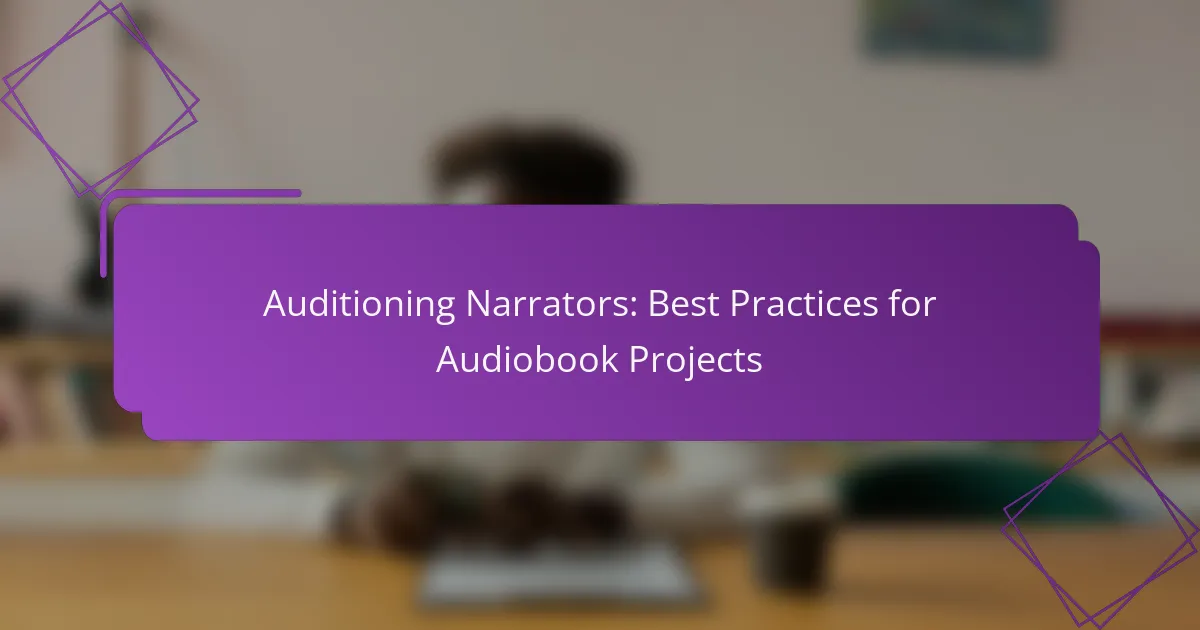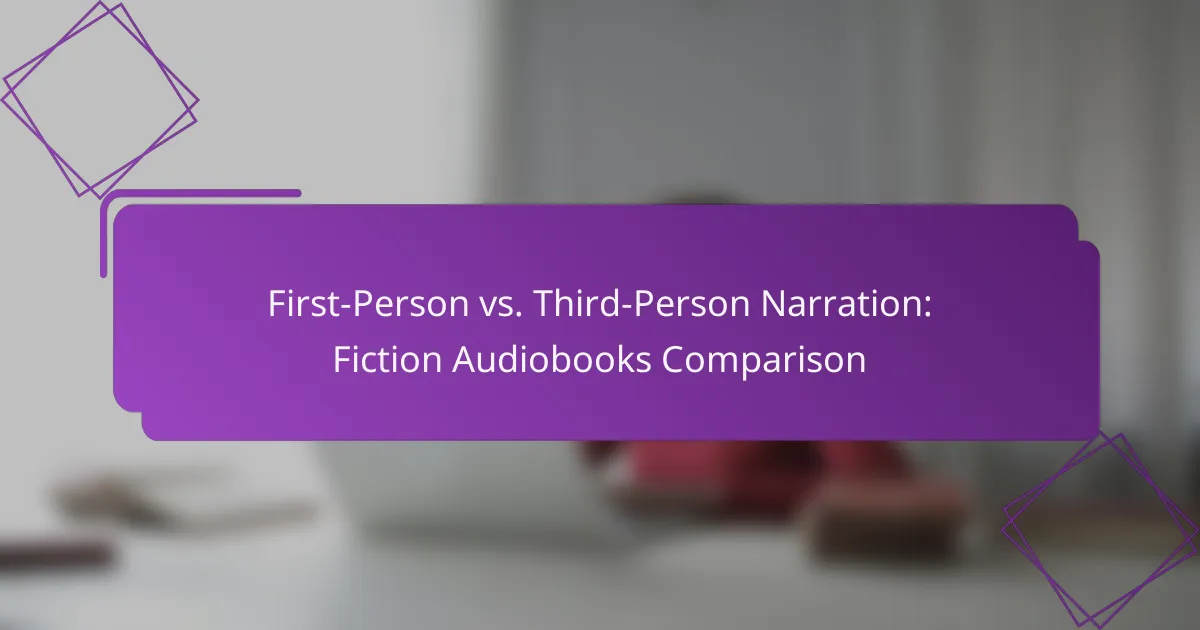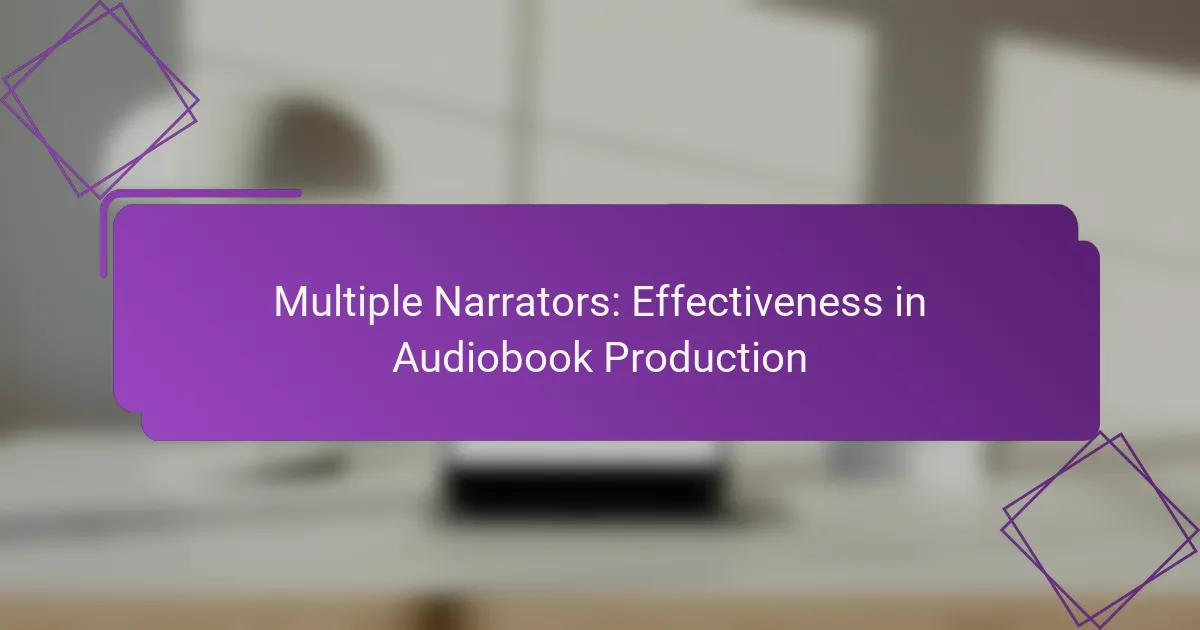Selecting the right narrator for your audiobook project is essential for bringing your story to life and captivating your audience. To achieve this, it’s important to consider factors such as genre compatibility, vocal range, and the narrator’s previous work. Implementing a structured audition process with clear scripts and specific evaluation criteria will help you find the perfect match for your project’s vision.
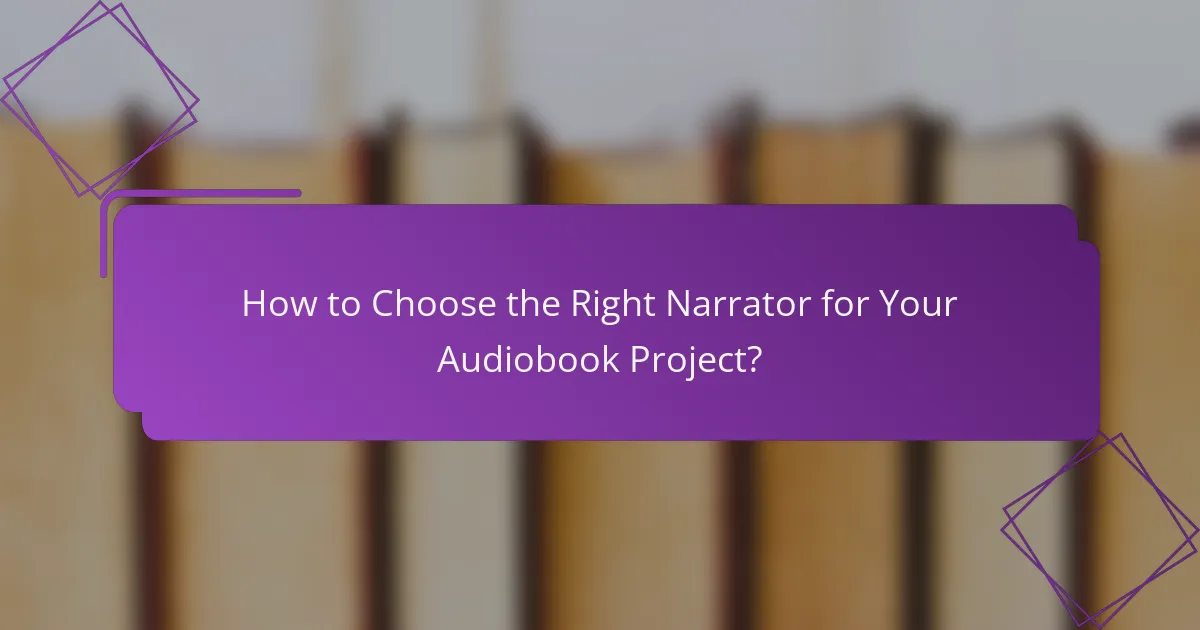
How to Choose the Right Narrator for Your Audiobook Project?
Selecting the right narrator for your audiobook project is crucial for effectively conveying your story and engaging listeners. Consider factors such as genre compatibility, vocal range, previous work, and pricing to ensure a successful match.
Consider genre compatibility
Choosing a narrator who aligns with your audiobook’s genre is essential for authenticity. For instance, a narrator with experience in romance may excel in conveying emotional depth, while a narrator specializing in thrillers might bring a sense of urgency and suspense. Understanding the nuances of your genre will help you find a voice that resonates with your target audience.
Additionally, consider the tone and style of your content. A light-hearted children’s book may require a playful and animated voice, whereas a serious non-fiction title might benefit from a more authoritative and calm delivery.
Evaluate vocal range and style
Assessing a narrator’s vocal range and style is vital to ensure they can effectively portray different characters and emotions. A versatile narrator can adapt their voice to suit various roles, enhancing the listening experience. Look for narrators who can switch between tones, accents, and pacing to match the dynamics of your story.
When listening to samples, pay attention to how well the narrator captures the essence of different characters and whether their style aligns with your vision. This will help you determine if they can bring your audiobook to life.
Check previous work samples
Reviewing a narrator’s previous work samples provides insight into their experience and suitability for your project. Listen to a range of their audiobooks to gauge their performance quality, pacing, and emotional delivery. This will help you identify whether their style matches your expectations.
Platforms like Audible or ACX often showcase narrators’ portfolios, making it easier to find relevant samples. Consider reaching out to other authors or producers for recommendations based on their experiences with specific narrators.
Assess availability and pricing
Understanding a narrator’s availability and pricing structure is crucial for planning your audiobook project. Many narrators charge per finished hour, with rates varying widely based on experience and demand. Budgeting for this expense early on will help you avoid surprises later.
Additionally, confirm the narrator’s availability to meet your project timeline. Some may have long waitlists, while others might be able to start immediately. Clear communication about deadlines and expectations will facilitate a smoother collaboration.

What are the best practices for auditioning narrators?
Effective auditioning of narrators involves using clear scripts, setting specific criteria, and providing context for the material. These practices ensure that you select a narrator who aligns with your project’s vision and can deliver the desired performance.
Use clear audition scripts
Providing clear audition scripts is crucial for assessing a narrator’s suitability. Scripts should be representative of the material, including key themes, character voices, and emotional tones. This helps narrators understand the style and pacing required for the project.
When selecting scripts, choose excerpts that are concise yet impactful, ideally ranging from 1 to 3 minutes in length. This duration allows narrators to showcase their abilities without overwhelming them or the evaluators.
Set specific audition criteria
Establishing specific audition criteria helps streamline the selection process. Criteria may include vocal qualities such as tone, clarity, and expressiveness, as well as technical skills like pacing and pronunciation. Define what you are looking for in terms of character interpretation and emotional delivery.
Consider creating a checklist for evaluators to use during auditions. This can include categories like character fit, emotional range, and overall performance quality, allowing for a more structured assessment of each narrator.
Provide context for the material
Providing context for the material is essential for narrators to deliver authentic performances. Share background information about the story, characters, and themes, as well as any specific instructions regarding the intended audience. This context helps narrators connect with the material on a deeper level.
Additionally, consider including a brief synopsis or character descriptions along with the audition scripts. This information can guide narrators in their interpretation and enhance the overall quality of their auditions.
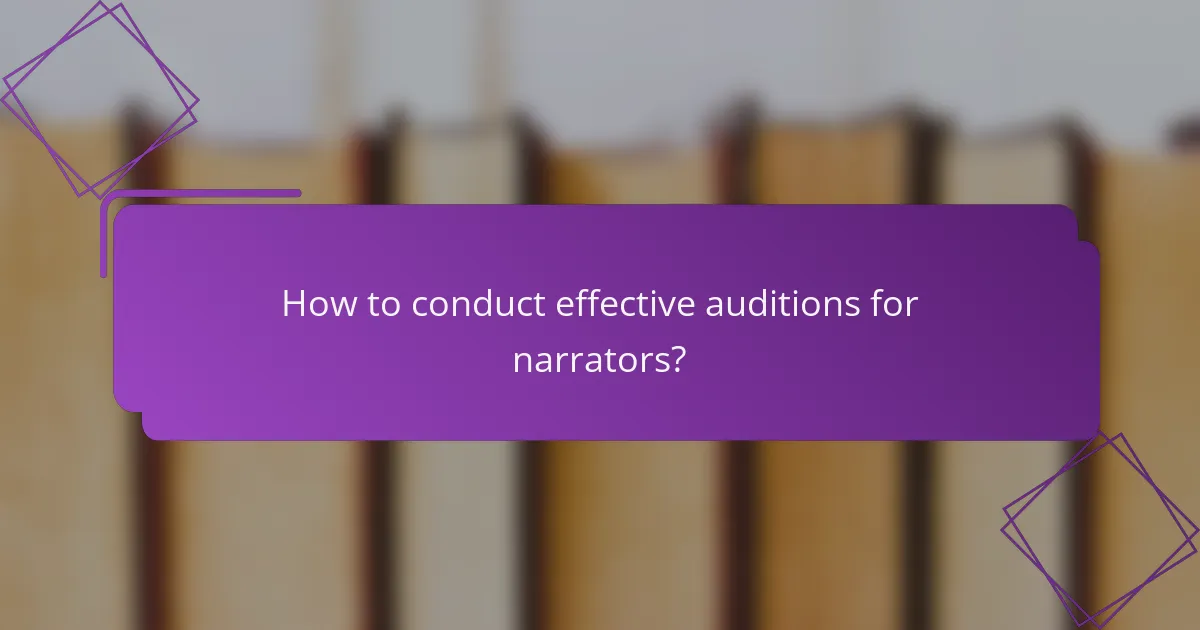
How to conduct effective auditions for narrators?
Conducting effective auditions for narrators involves creating a clear process that allows you to evaluate their skills accurately. This includes setting specific criteria, utilizing technology, and gathering diverse feedback to ensure the best fit for your audiobook project.
Implement a structured audition process
A structured audition process helps streamline evaluations and ensures consistency across candidates. Start by defining the key qualities you seek in a narrator, such as vocal range, clarity, and emotional delivery.
Prepare a standardized script for all candidates to read, which should reflect the tone and style of your audiobook. This allows for a fair comparison of performances. Consider setting a time limit for auditions to maintain efficiency.
Utilize remote auditioning tools
Remote auditioning tools enable you to reach a wider pool of narrators without geographical constraints. Platforms like Zoom or specialized audio recording software can facilitate real-time auditions or allow candidates to submit recordings.
Ensure that the tools you choose allow for high-quality audio capture, as sound clarity is crucial for evaluating a narrator’s performance. Provide clear instructions on how to use these tools to avoid technical issues during the audition process.
Gather feedback from multiple stakeholders
Collecting feedback from various stakeholders enriches the decision-making process. Involve team members who understand the project’s vision, such as editors, producers, or even potential listeners.
Establish a feedback form with specific criteria for evaluation, such as pacing, character portrayal, and overall engagement. This structured approach helps consolidate opinions and highlights any consensus or discrepancies among reviewers.
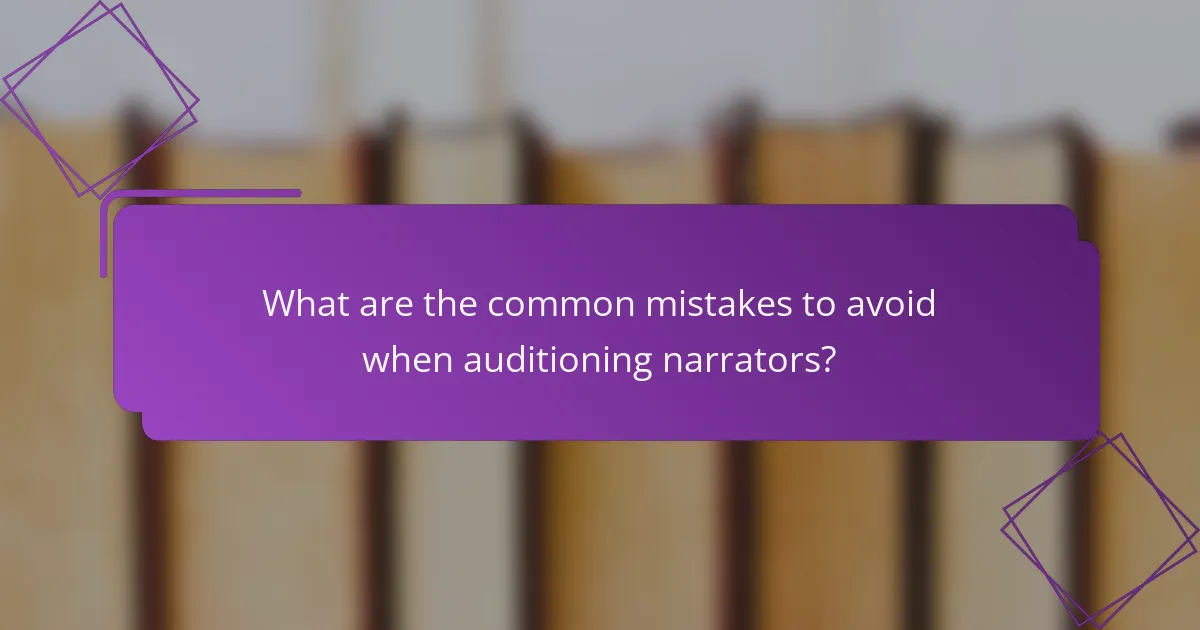
What are the common mistakes to avoid when auditioning narrators?
Common mistakes when auditioning narrators include failing to clearly communicate your project vision, overlooking the narrator’s experience, and skipping the rehearsal phase. Avoiding these pitfalls can lead to a more successful collaboration and a better final product.
Neglecting to communicate project vision
Clearly articulating your project vision is crucial for selecting the right narrator. This includes sharing the tone, style, and target audience of the audiobook. Without this guidance, narrators may misinterpret your expectations, leading to unsatisfactory auditions.
Provide detailed descriptions and examples of the desired outcome. Consider creating a project brief that outlines key themes, character voices, and emotional beats to ensure alignment between your vision and the narrator’s interpretation.
Overlooking narrator experience
Choosing a narrator without considering their experience can significantly impact the quality of your audiobook. Look for narrators who have a proven track record in your genre or similar projects, as their familiarity can enhance performance.
Review their previous work and seek testimonials or references. An experienced narrator will not only deliver a polished performance but also understand the nuances of pacing, character development, and audience engagement.
Skipping the rehearsal phase
Rehearsals are an essential step in the auditioning process that should not be overlooked. This phase allows you to assess how well the narrator adapts to feedback and aligns with your vision. It also provides an opportunity to refine character voices and pacing.
Consider scheduling a short rehearsal session before finalizing your choice. This can help identify any potential issues early on and ensure a smoother recording process. A well-prepared narrator will be more confident and deliver a better performance in the final recording.
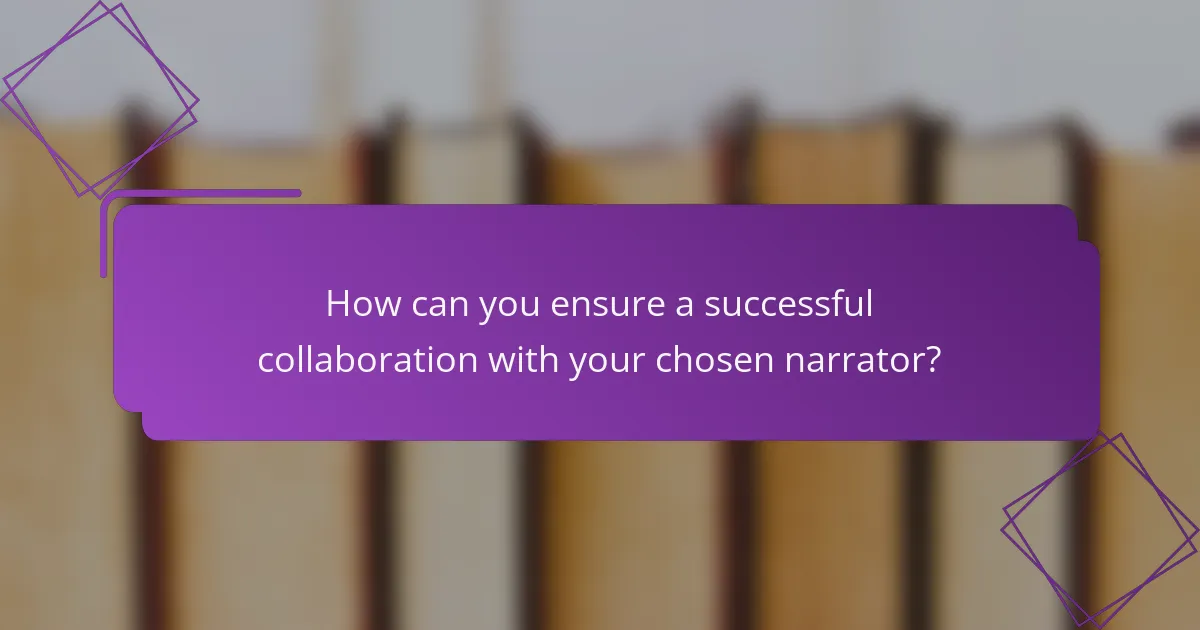
How can you ensure a successful collaboration with your chosen narrator?
To ensure a successful collaboration with your chosen narrator, establish a strong foundation of communication and mutual understanding. This involves setting clear expectations, providing feedback, and maintaining an open dialogue throughout the project.
Establish clear communication channels
Clear communication channels are essential for a productive collaboration with your narrator. Utilize tools such as email, messaging apps, or project management software to facilitate ongoing discussions and updates. This ensures that both parties are aligned on project goals and timelines.
Consider scheduling regular check-ins, especially during critical phases of the audiobook production. These meetings can help address any concerns promptly and keep the project on track. Aim for a balance between structured updates and informal conversations to foster a positive working relationship.
Be specific about your preferred communication methods and response times. For instance, if you expect replies within 24 hours, communicate this upfront. This clarity helps prevent misunderstandings and keeps the project flowing smoothly.
